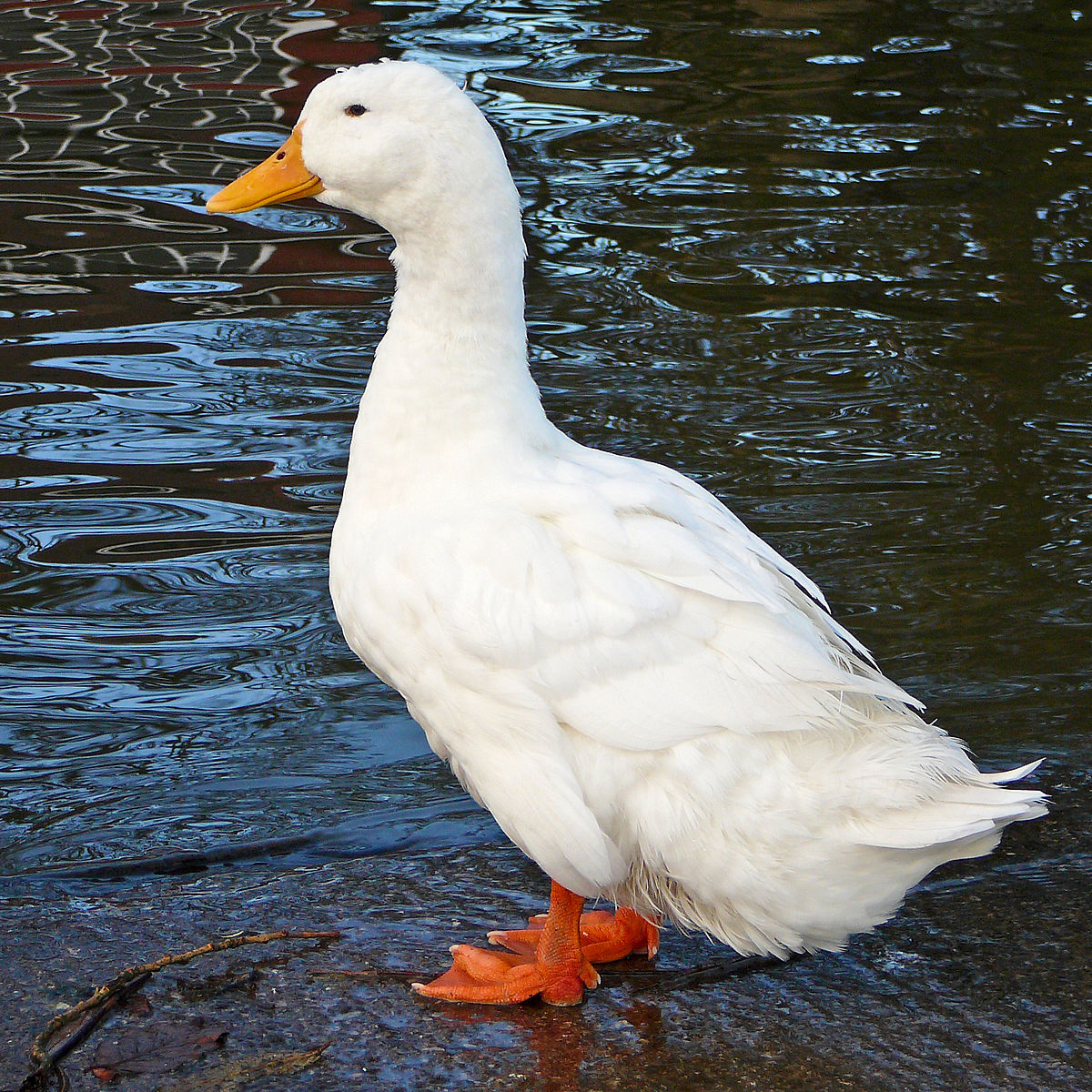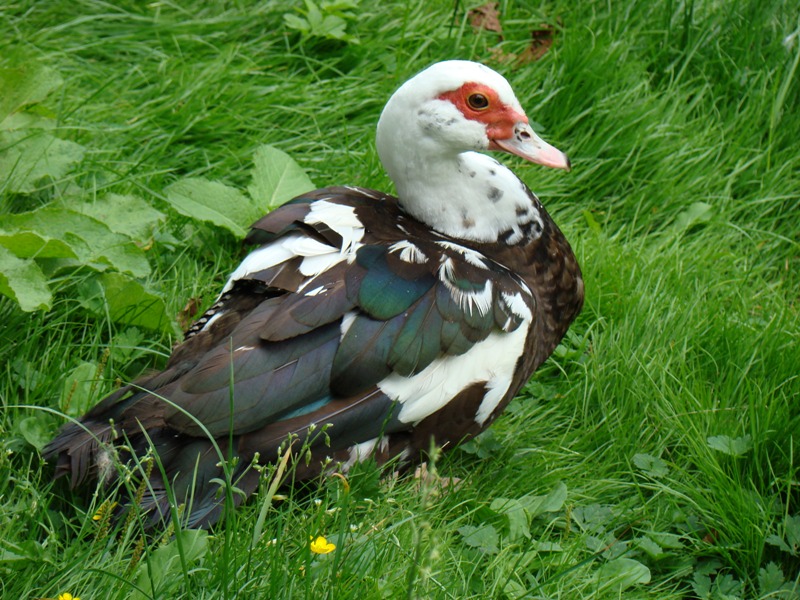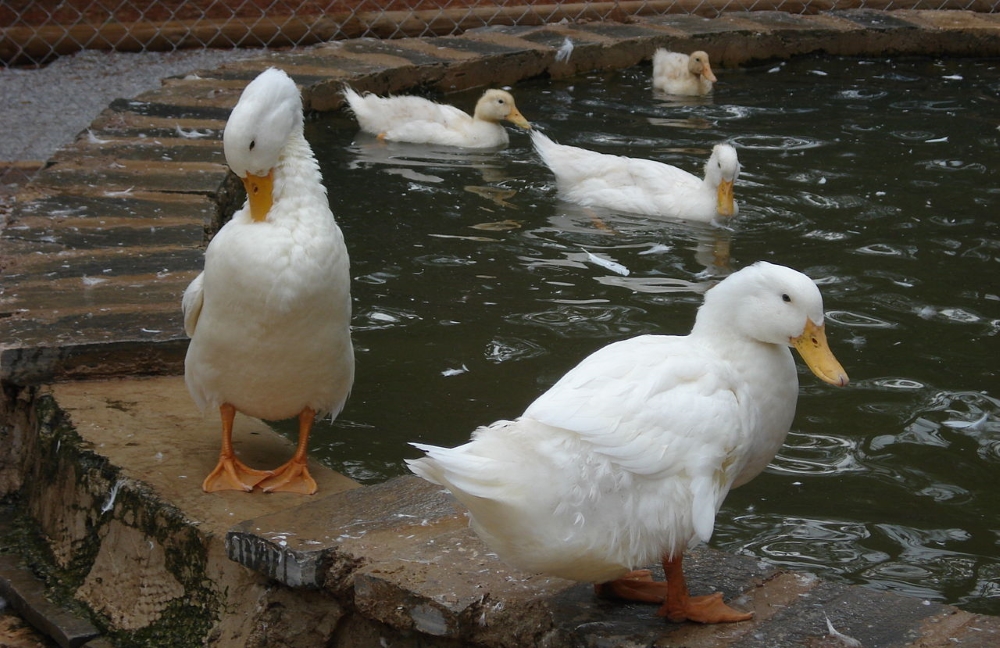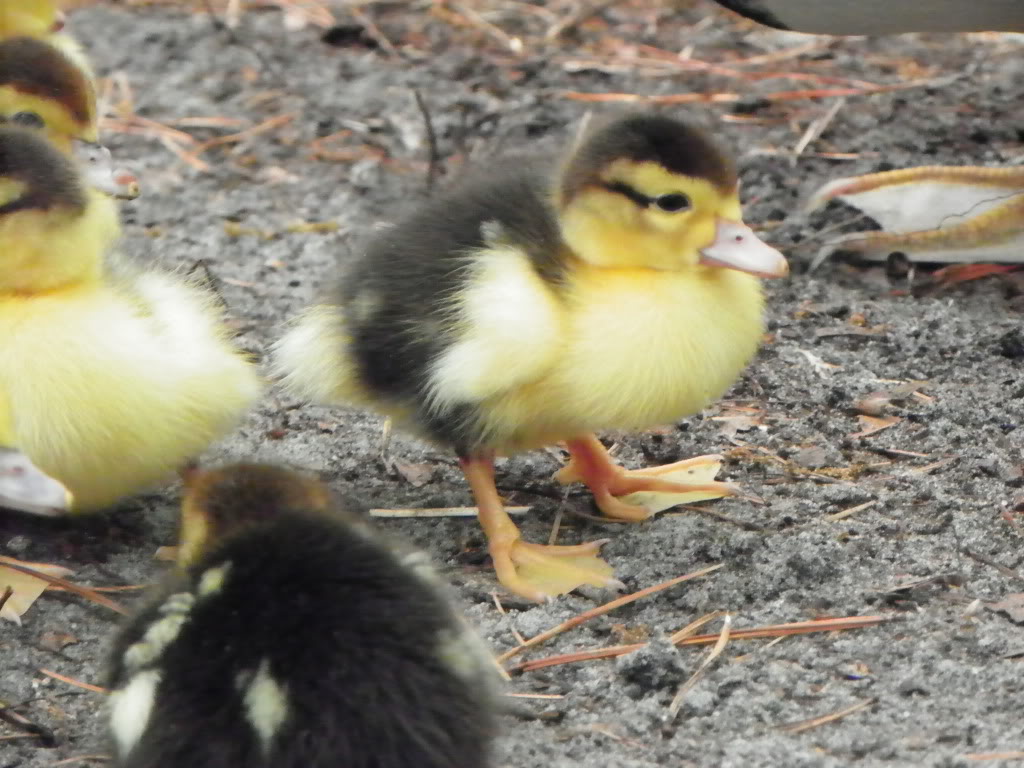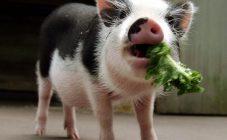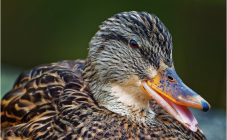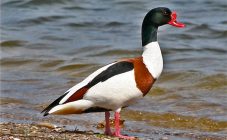Content:
Over 110 species of ducks have been registered. Only 30 species are popular in Russia. These are sheaths, diving, duck, mulard, musky ducks and others.
Domestic ducks are water birds. They fly little and reluctantly. Ease of keeping and breeding has become the reason for the popularity of these birds in the agricultural market. Various breeds have been bred for the purpose of obtaining meat, feathers and for decorative purposes. Duck liver is prized as an ingredient in recipes such as foie gras.
Bird description
Unlike wild relatives, the domestic duck is small in size. What does a domestic duck look like?
The short neck and tarsus are covered in front with shields. Variations in color are varied, but many species have special "mirrors" on the wings. Mostly there are monochromatic colors, less often - variegated. The most common sexual demorphism in the plumage of males and females.
Drakes weigh on average 3-4 kg, ducks - 2-3.5 kg. The average egg production is up to 250 eggs per year. Thanks to the work of breeders, separate directions of ducks have been bred:
- meat - Peking, gray Ukrainian;
- meat-eating - mirror;
- egg - Indian runners.
Domestic ducks are similar in appearance to their wild relatives - mallards. They have a wide chest and back, a strong physique. There is variation in neck length and head size from breed to breed. The wings are large, with a good span. The tail is short, raised upwards. The legs of the ducks are short and strong. The beak is large.
The long-standing riddle "Does a duck have teeth?" Is finally answered. These birds do not have real teeth. However, the beak is covered with horny plates at the edges, which have the form of teeth. These protrusions are necessary for holding food. The function of the teeth is performed by the gizzard. Swallowing pebbles and contracting the walls of the stomach, ducks grind food.
The musculoskeletal system is represented by the skeleton and bones of the limbs. The skeleton consists of the cranial bones and the vertebral column with the sternum and ribs. The bones that cover the internal organs are flat and wide. Limb bones of different lengths. To facilitate flight, most bones have a cavity.
The vertebral column is formed from the cervical, thoracic, lumbar, sacral and caudal regions. The cervical spine contains 14-16 vertebrae. Between each vertebra is a saddle joint, which forms a canal for the spinal cord. There are 9 vertebrae in the thoracic part of the ducks, while the vertebrae from the second to the fifth are connected together. The sixth and the first are held freely. The connection with the lumbar spine occurs at the seventh vertebra. In this area, a chest cavity is formed by joining the ribs. All ribs are connected to the transverse processes of the vertebrae. The other ends of the ribs meet at the sternum. The sternum looks like a wide plate that ends in ribs. In its middle part there is a ridge ledge, to which all the pectoral muscles are attached. The lumbar and sacral regions are represented by 14 vertebrae connected into a single whole. The pelvic area consists of the vertebrae of the sacrum and lower back, iliac, pubic and ischial bones. The tail ends the spinal column. It is represented by 7 vertebrae.
The forelimbs (wings) and hindquarters (legs) have different functions. The wings connect to the body through the collarbone and shoulder blades. High joint mobility is essential for wing movement.The hind limbs are connected to the trunk at the joint with the ilium.
Breeding ducks
Duck breeding has its own distinctive features compared to other bird species. First of all, you need to choose good breeding individuals. How many females are needed per male? A family of ducks is formed from a proportion of 1 drake per 6-7 females.
Family formation must be carried out in advance, preferably in the fall. To do this, a flock of birds must be separated and kept apart. By spring, the ducks get used to each other and become ready to breed.
How do ducks breed? Individuals are considered sexually mature at the age of 6-8 months. Ducks are characterized by 2 oviposition streams. During these periods, males begin to show maximum sexual activity.
How do ducks mate? When ducks mate on land, the drake begins to walk around the female, bending its neck and screaming loudly. Having accepted his courtship, the female lies down, the drake climbs from above and begins to trample on it.
During intercourse in the water, the male performs a ritual diving dance, after which he sits on the duck. The fusion of male and female gametes occurs after the entry of sperm into the female's cloaca. Then they move along the oviduct, from where they reach the ovum, and fertilize it. An egg can be fertilized with only one sperm.
To control the development of the embryo, ovoscopy procedures can be performed, i.e. translucent duck eggs. The procedure is complicated by the higher density of the shell compared to chickens.
The first transillumination can be carried out on the 8th day after laying; for this period, unfertilized eggs can be discarded. Signs of embryo development during this period are:
- well-visible circulatory system;
- the presence of a shadow of the embryo;
- clear limitation of the air chamber.
The next inspection must be carried out on day 14. At this time, the embryo is well visualized against the background of the shell. Before hatching on days 26-32, you can hear the squeak and rustle of chicks in the eggs. The dead "suffocators" on the ovoscope do not move. In addition, such eggs do not keep the temperature well.
The average hatching time of a duck varies among breeds. For Peking ducks, it is 27-29 days, for musk ducks - 33-35 days.
Why don't ducks drown
Why does a duck swim? Ducks have several features that allow them to swim calmly in the water and not drown.
The air bag helps to lighten the body weight of the ducks, which makes the duck able to swim and stay in the water. In addition, duck bones have cavities filled with air. Separately, it should be noted the water resistance of the feathers. They are covered in an oily fluid produced by a sebaceous gland located under the tail. Before entering the water, the duck covers the feathers with a water-repellent compound, raising the feathers and distributing it to the base. In addition, the feathers fit snugly to the body and have many couplings to keep them in this state.
The webbed feet also play a role in keeping ducks afloat. They have developed 3 movable fingers, directed upwards and connected by membranes. Movable and strong feet are not sensitive to cold water. Raking the water with its paws, the bird calmly swims on the surface of the water.
Why don't ducks fly
The main question that worries novice poultry farmers: "Can ducks fly?" After the breeding of the domestic duck breed from the wild ancestor of the mallard, the question arose of eliminating the ability to fly. Currently, the overwhelming majority of domestic ducks cannot fly.This is due to the fact that broiler breeds are breeding more often. At the age of 2-3 months, the weight of such individuals does not allow them to rise into the air.
Why clip wings? When breeding breeds such as musk ducks or Peking ducks, a wing clipping procedure must be followed. Otherwise, ducks can fly away from the infield. By clipping both wings, the possibility of long-distance flights is excluded, but for such a bird the ability to soar, overcome a short distance and obstacles remains. If you cut only one wing, the resulting imbalance will not even allow you to rise into the air due to loss of balance.
Ducks behavior
Unlike chickens, ducks are less vociferous birds. The voice of ducks is medium timbre, a little creaky. The voice of the male duck differs from that of the females: instead of the usual "quack", the voice of the mute sounds like "shshak". To call the ducks, you can use special whistles that imitate a similar sound. Ducks do not show aggressive behavior towards other species of birds and towards each other. As a rule, ducks are kept in a flock. The dispersal of individuals occurs only in water bodies during swimming. The peculiarity of being a formed group allows them to be released for grazing like livestock. In some countries, herding dogs are used for this.
Compared to chickens, ducks are much smarter. They can independently find their way home, as if using a navigator, returning to the house for the night.
Unlike other birds, ducks are herbivores, not granivores. Their diet is based on the soft and succulent parts of aquatic plants. It can be algae, duckweed, grass seedlings on the shore of the reservoir. In addition to plant food, ducks consume slugs, snails and worms. The convenience of keeping ducks is that they find most of the diet on their own, needing only a little feeding. Keeping ducks in the garden will help get rid of pests and weeds, since most cultivated plants are not interesting for ducks.
Chicks of ducks
Ducks, like all birds, lay eggs. Therefore, the question of how ducks give birth can be viewed from the perspective of laying eggs. Egg formation takes place in the mother's body from a fertilized egg. Then it passes through the oviduct, and the laying hen lays an egg, after incubation of which a duckling hatches.
It is optimal to raise ducklings with brood ducks. One brooding duck is able to raise 10-15 ducklings. In this case, the chicks quickly prepare their own thermoregulation system for external conditions. By the third or fifth day, they can be released with a brood hen. From a week of age for a couple of hours - swim in a pond.
The body of the newly hatched duckling contains the remainder of the egg yolk. The sooner it dissolves, the better the ducklings will develop. To stimulate its disappearance, it is necessary to start feeding the ducklings as early as possible.
Healthy three-day-old ducklings weigh about 50 grams and have shiny, dyed down. The belly should be tucked up. The duckling should be firmly on its feet, be mobile. Ducklings hatched with defects, as a rule, are not viable and die quickly.
You can determine the sex of outwardly similar ducklings by the presence of a spherical tubercle in the lower part of the cloaca.
Ducklings, like adults, sleep in the dark, forming flocks. The ducklings located in the outer circle sleep with their eyes closed. After some time, individuals rotate from the inner circle to the outer one.
The reservoir is absolutely essential for the correct development of the young.You can release babies into the water from 20 days of age. At this time, they begin to produce an oily secret of the coccygeal gland. Initially, the chicks can be allowed to stay in the water for no more than 2-3 hours, increasing the time step by step. From the age of one month, ducklings are allowed to stay in the water all day.
Summing up, we can say that raising ducks has its own nuances. The quick gain in slaughter weight, the palatability of the meat and the ability to use down and feathers in the textile industry make ducks attractive for rural areas. The ability of birds to independently search for food while walking and, while swimming in nature in a reservoir, saves the farmer's money. An important condition for the normal development of ducks is the presence of a reservoir. In the absence of natural water sources in the city, it is necessary to equip swimming ponds.
